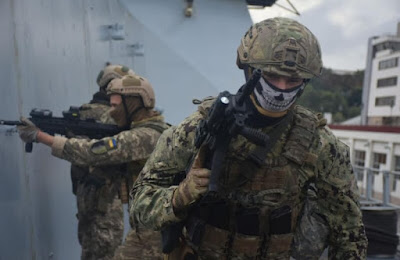The civilian was in the wrong place at the wrong time, riding his bicycle past three Russian soldiers who decided to shoot him for no discernible reason other than their own amusement. Since Ukrainian soldiers filmed the incident, they knew where to look for the perpetrators and then dealt with them summarily. JL
Taras Safronov reports in Militarnyi:
In the village of Torske, in the Lyman salient, the Russian military shot a civilian riding a bicycle and then killed him at close range. A 63rd Mechanized Brigade drone recorded the crime. Ukrainian FPV drones and artillery tracked down and destroyed the war criminals. “There was no need for a trial – instant karma worked. Our drone pilots and artillerymen eliminated all three Russians.” Torske is a part of the “Lyman salient” – an area that prevents the enemy from advancing to Siversk, Lyman, and Sloviansk.
























